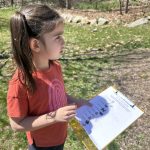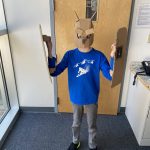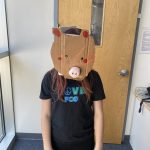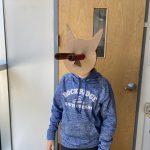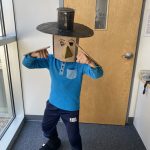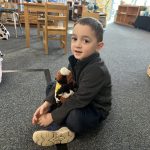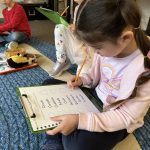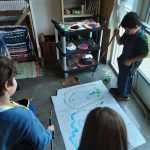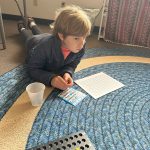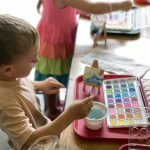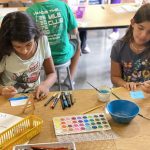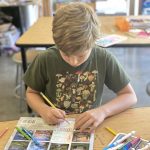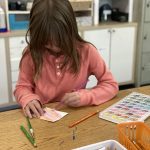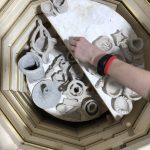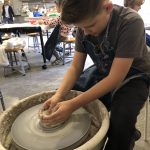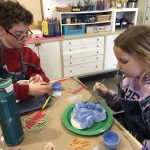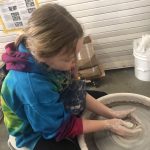Primary and LE: “Mi cuerpo” & “La Primavera”; UE: “La Comida” & “La Primavera”; MS: “Verbo Tener” & “La Primavera,” reading, comprehension, listening, and vocabulary from each topic.
A general review of all we have learned to this point in this school year has been done at every level. In addition, FWM students are still working on their usual conversation skills, such as Spanish greetings, feelings, the calendar, and descriptions of the weather, as repetition is the key to learning another language. They are continuously improving their Spanish understanding. Students from Primary, Lower Elementary, Upper Elementary, and Middle School listened carefully to Spanish books and songs and participated in interactive games that were displayed during class.
Primary and Lower Elementary students started to learn names of some parts of the human body in Spanish, the lesson is called “Mi cuerpo;”: cabeza, hombros, rodillas, pies, codo, ojos, orejas, boca y manos. In addition, Primary students and Lower elementary students learned some new vocabulary that we use in “La Primavera”such as: pájaro, patito, nido, abeja, mariposa, mariquita, oruga, tulipán, hoja, semillas, sol, Lluvia, arco iris and many more depending of the grade. The same type of Montessori lessons, such as the three-part learning cards and matching cards, were used to reinforce concepts. The children also really enjoyed singing and participating in classroom games. Spanish Montessori Lessons were presented in class and left in their classroom to be practiced during the week, in addition to some worksheets.
Upper Elementary Students continued practicing the use of the articles (el, los, la, las) in Spanish. In addition, they are learning about food in Spanish “La Comida”. They continue practicing their writing, listening and vocabulary through activities, worksheets, and games we used in class. We also learned new vocabulary to use in our lesson about “La Primavera”. Children enjoyed the outdoor Spanish scavenger hunt, singing about “La Primavera,” enhancing recognition and repetition of the sounds that help with the pronunciation of the language.
Middle School students also continue working year-round on their Spanish greetings, description of weather, feelings, and their daily calendar, including days of the week, months, and seasons. Students continue working on the Spanish curriculum in the “Avancemos” program. They also focused on learning the verb “Tener” (to have) and its different conjugations depending on the pronoun used. When they learn a new verb, such as “Tener,” they practice it in worksheets that include exercises focusing on listening and comprehension. We are reading short stories for youth in Spanish to enhance their vocabulary, reading, listening, and comprehension.
Children in all grades enjoyed the beautiful weather, learning about “La Primavera,” participating in an outdoor Scavenger Hunt, and reading some stories outside. All the students at FWM are enjoying learning Spanish, and I am very pleased with their progress in accomplishing goals in my class.



